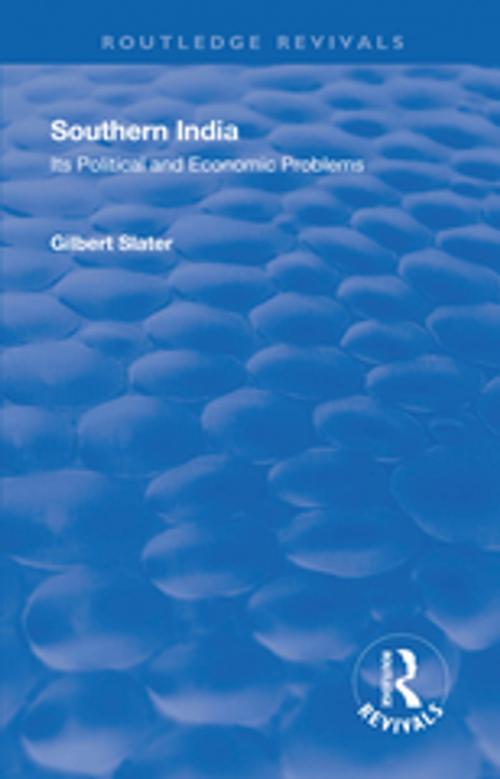Revival: Southern India (1936)
Its Political and Economic Problems
Nonfiction, History, Asian, Asia, Social & Cultural Studies, Social Science, Cultural Studies, Ethnic Studies| Author: | Gilbert Slater | ISBN: | 9781351344098 |
| Publisher: | Taylor and Francis | Publication: | January 16, 2018 |
| Imprint: | Routledge | Language: | English |
| Author: | Gilbert Slater |
| ISBN: | 9781351344098 |
| Publisher: | Taylor and Francis |
| Publication: | January 16, 2018 |
| Imprint: | Routledge |
| Language: | English |
This book deals firstly with the economic and social conditions of life among the villagers, the artisans, and other workers in cities and towns of South India, and also with the new issues raised in India during the most momentous years of its history since the mutiny – the commercial and financial disturbances following the war, the sudden appearance of aggressive Trade Unionism, the famines of 1918 and 1920, the rise of the Home Rule agitation and the Non-Co-operation movement, and the coming into operation of the new Constitution of 1919. The author, who went to India in 1915 as Professor of Indian Economics in the University of Madras, was quickly brought into contact with heads of departments of the Provincial Government, was nominated by Lord Willingdon to the Madras Legislative Council, served in the Indian Board of Agriculture, and stayed on for a year in charge of the Madras Publicity Office. In these and in other ways he has had exceptional opportunities of getting insight into Indian problems from an unusual point of view.
This book deals firstly with the economic and social conditions of life among the villagers, the artisans, and other workers in cities and towns of South India, and also with the new issues raised in India during the most momentous years of its history since the mutiny – the commercial and financial disturbances following the war, the sudden appearance of aggressive Trade Unionism, the famines of 1918 and 1920, the rise of the Home Rule agitation and the Non-Co-operation movement, and the coming into operation of the new Constitution of 1919. The author, who went to India in 1915 as Professor of Indian Economics in the University of Madras, was quickly brought into contact with heads of departments of the Provincial Government, was nominated by Lord Willingdon to the Madras Legislative Council, served in the Indian Board of Agriculture, and stayed on for a year in charge of the Madras Publicity Office. In these and in other ways he has had exceptional opportunities of getting insight into Indian problems from an unusual point of view.















